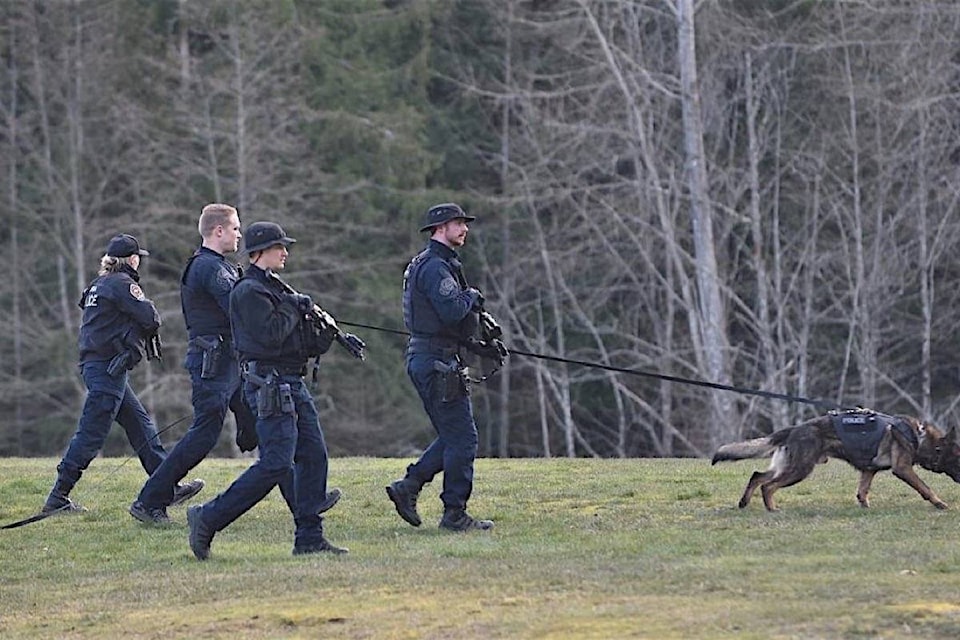By Tom Fletcher, with files from Paul Rodgers
Credible reports of armed intruders are rare for B.C. schools, but they do happen.
A middle school in Central Saanich is a recent example, after the administration received multiple student reports on March 1 of a man hiding in bushes near the school with what may have been a weapon.
As most schools do in an annual drill, a lockdown went into effect and police were notified. Doors are locked, students go into closets or under desks, blinds are closed, lights turned off and everyone keeps quiet while the threat is assessed.
At Bayside middle school that day, the regional police Emergency Response Team arrived with an armoured vehicle, extra weapons and a dog handler to search a one-kilometre radius of the school. It would take a nerve-wracking five hours before parents could be told the threat was ended. No suspect was located.
B.C. Education Minister Rob Fleming says communication, reporting and awareness are keys to the ministry’s system established in 2012, known as the Expect Respect and A Safe Education (ERASE) Bullying Strategy. A review for updates is currently underway.
“When you look at events south of the border, I think school districts are looking for ways they can evaluate whether what we have in B.C. schools is significant enough,” Fleming told Black Press. “A lot of it is acting on tips. Information comes from students talking in the school, that gets to a teacher, maybe a parent, and it’s passed to a principal or a school administrator.”
The ministry’s ERASE Bullying website includes a reporting tool where students can anonymously warn the administration of threats or harassment against students. That includes online harassment, to identify situations that could lead to violence.
In 2017, training for “digital threat assessment” was introduced, and 17,000 staff have completed the training. A provincial team of experts in violence risk assessment and prevention gives direct support to schools and school districts on high-risk cases and critical incidents.
Fleming notes that local school districts are ultimately responsible for security policies, but all boards of education and independent school authorities must have lockdown procedures in place.
“We are well drilled here and in BC in terms of policy,” said Jason Tichauer, Safe Schools Coordinator for School District 5, which includes Cranbrook. “But that policy and that training tells us that when there are significant acts we are in a bit of a critical incident period for copycats for people for harm to others or self harm.”
Tichauer explained that part of the violence and risk assessment training involves the notion that dates such as the school shooting in Florida have significance — and staff need to be mindful of their anniversaries, which are referred to as critical incident periods. He gave the example of the Taber, AB school shooting that took place just one week after the Columbine shooting in 1999.
Tichauer said that students here take lockdown, lockout and shelter-in-place drills very seriously. In December 2014, when a bomb threat was received at the Cranbrook Safeway, the students of Mount Baker went into a shelter-in-place procedure.
“So all these things are drilled, because oftentimes with things like shelter-in-place your coordination is around alternate bussing routes and that sort of thing,” said Tichauer. “So these are different all-hazard approaches and we drill them all.”
B.C. schools are generally designed so almost all doors, internal and external, can be locked, ministry officials say. Many have policies where all doors are kept locked except one close to the office to ensure visitors check in.
Education ministry officials say many B.C. districts have gone to mandatory identification badges for school entry. Some have used the authority available under the School Act to install video surveillance cameras, which requires approval of the individual school planning council.
